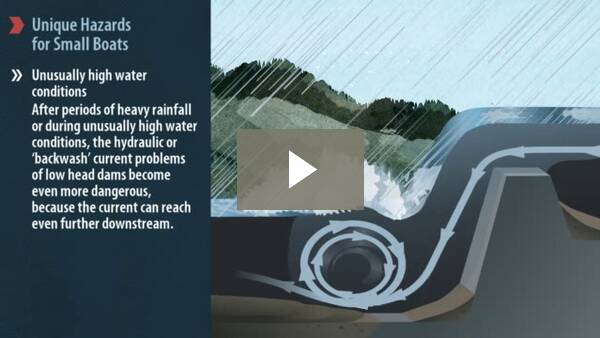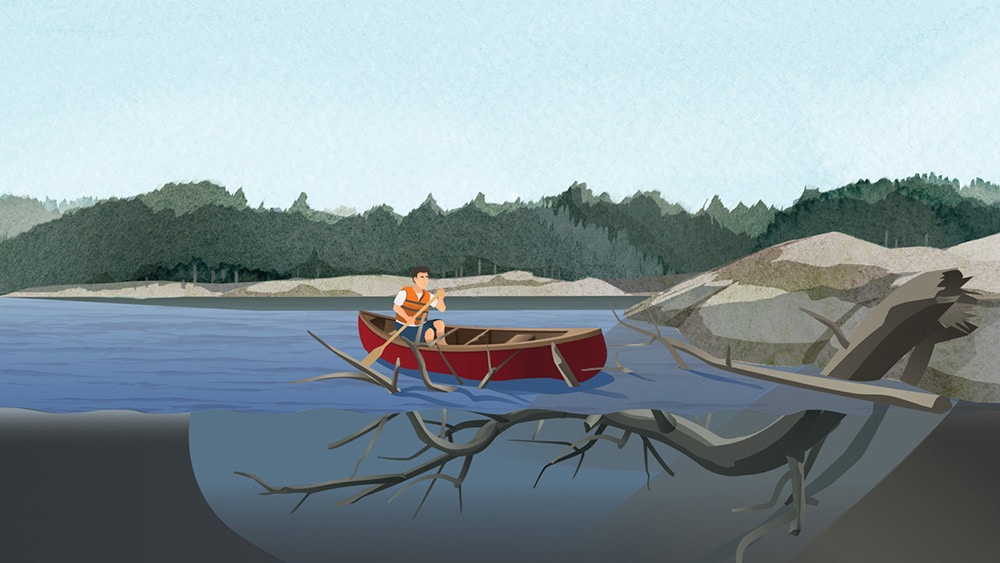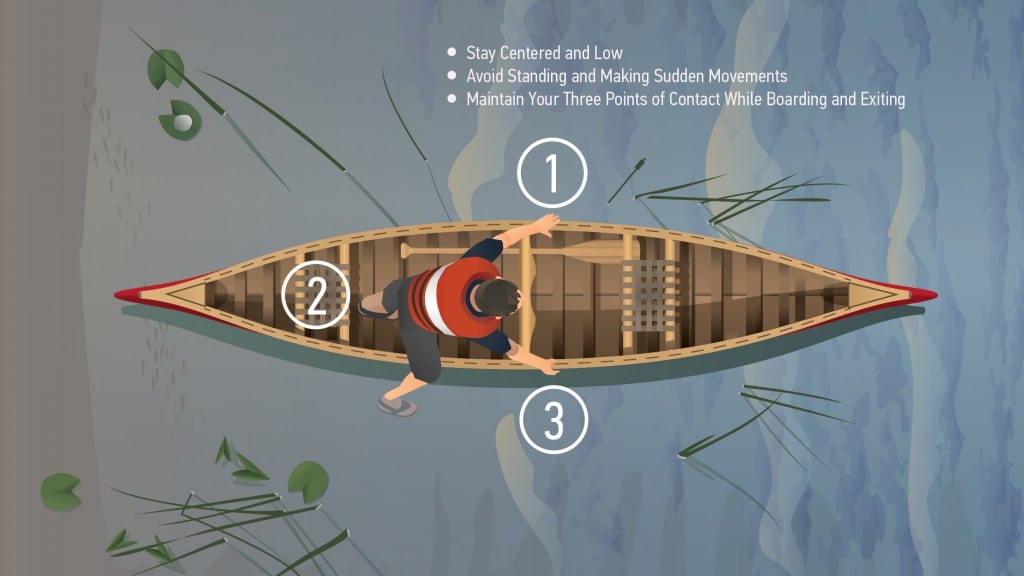Safety in Small Boats
A relaxing glide across the lake in your kayak or canoe is a great way to see the landscapes around you while also getting some exercise! However, this experience can be quickly ruined if your paddle craft or small motorboat is swamped by the wake of another boat. You must practice situational awareness and be aware of the effect of your wake on smaller boats.
Hazards for Small Boats
Unlike most larger boats, small boats and paddle craft are able to access smaller waterways. This means that in addition to open water hazards of larger waterways, operators of smaller boats must also be aware of the unique hazards they may encounter in smaller waterways, including:
Strainers: A ‘strainer’ is an obstacle that’s formed out of rocks, fallen trees and other types of debris that end up in rivers. The water will flow through a strainer, but it will stop or ‘strain’ your small boat and keep it from moving forward.
Low head dams: These structures are sometimes called ‘death machines’ because they’re capable of trapping a person under the water with the force of the hydraulic or ‘backwash’ current they produce. Always go around low head dam areas—head to shore and carry your boat well past the dangerous area.
Unusually high water conditions: After periods of heavy rainfall or during unusually high water conditions, the hydraulic or ‘backwash’ current problems of low head dams become even more dangerous, because the current can reach even further downstream.
Strong currents and rapids: If you encounter strong currents or rapids, you should immediately head to shore or turn back to a safe water area. If you’re in a paddle craft, you should head to shore and carry your boat well past the dangerous area. The water current may be too strong for you to remain in control of your paddle craft.
All paddlers should be aware of the following statistics:
- 85% of the paddlers who drowned while canoeing were not wearing a life jacket.
- 48% of the paddlers who drowned while kayaking were not wearing a life jacket.
- 50% of the paddlers who drowned while canoeing or kayaking were fishing at the time of the accident.
- 25% of the people who drowned while canoeing are believed to have consumed alcohol immediately prior to the accident.
Safety Tips for Paddlers:
- Put it on your life jacket BEFORE you enter a paddle craft.
- Avoid alcohol and/or drug use.
- Fill out a Float Plan and leave it with a reliable person on shore.
- Use the three points of contact technique when entering a paddle craft (have either both hands and one foot or have both feet and one hand planted on the boat for stability when you’re entering the boat).
- Keep both the passenger and equipment weight balanced and centered at all times.
- Use the paddle as a reaching tool rather than your arms (passenger movement and weight shifting in canoes contribute to 50% of all canoeing accidents).
- Do not paddle during poor weather conditions.
- Paddle near the shoreline so that you can swim to shore in an emergency.
- Take a paddle course to improve your paddling skill level.
- Travel in numbers—never go paddling alone in case you require assistance during the trip.
Know how to swim and how to rescue yourself if your paddle craft capsizes.






